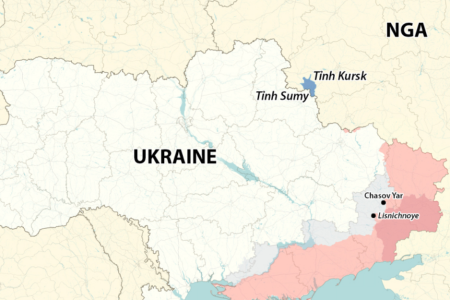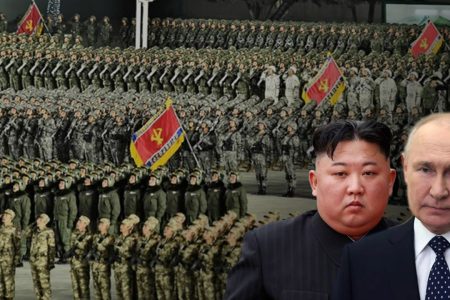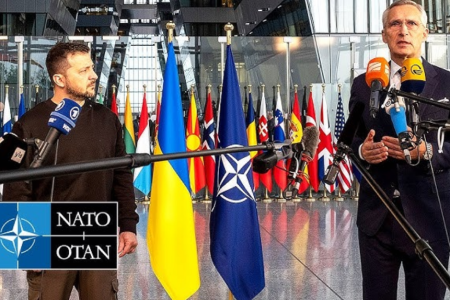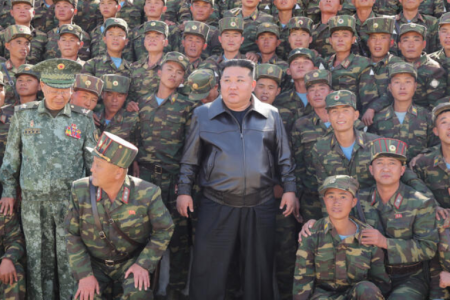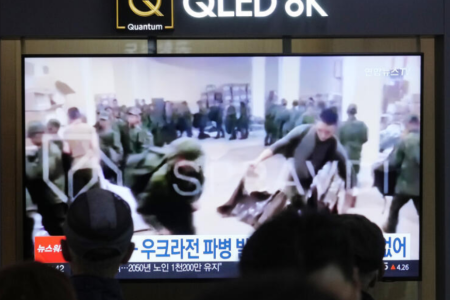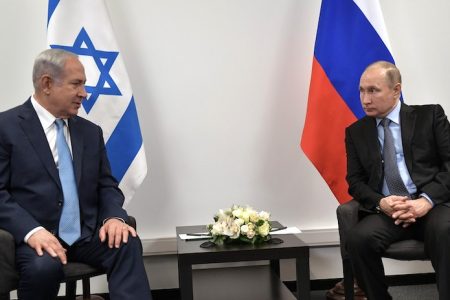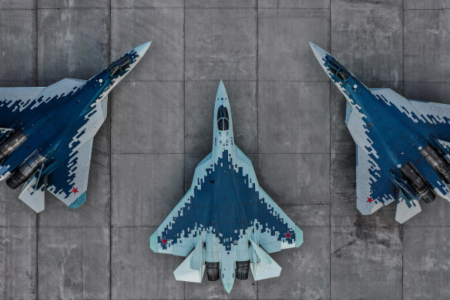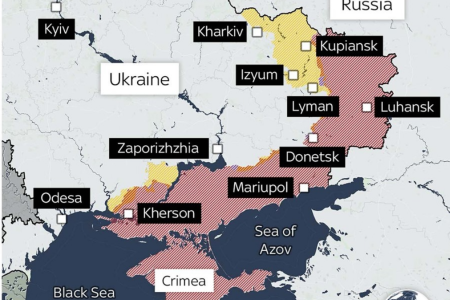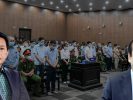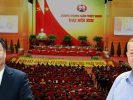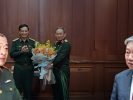Since Xi Jinping became President in 2013, Beijing has been trying to promote his new slogan: “Chinese Dream” in Chinese characters. Liu Ming Fu, former Chinese army colonel, said: “President Xi Jinping’s dream is a stronger nation with a mighty army.”
Assoc. Professor Dr. Pham Quy Tho, former head of the Department of Public Policy, Institute of Policy and Development, Ministry of Planning and Investment of Vietnam, questioned where Vietnam should be when the “Chinese Dream” was continuous expansion in the region and around the world.
The 13th Congress of the Communist Party of Vietnam (CPV), scheduled to be held in early 2021, still focuses on internal issues such as regime consolidation and economic development.
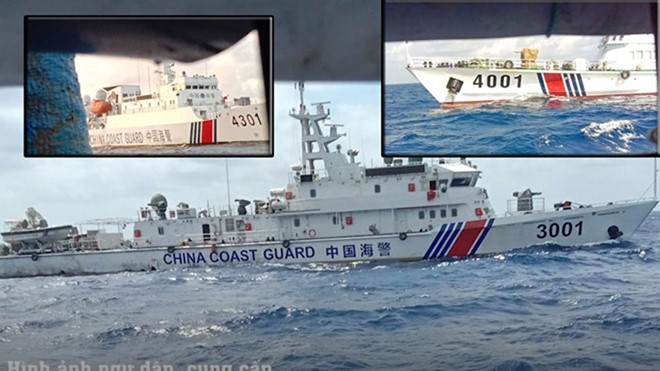
“The new event occurred on April 2 as Chinese maritime vessels to surpressed and then sank the fishing vessel QNg 90617 TS with eight Vietnamese fishermen operating normally in Vietnam’s waters.
This is one of the continuous moves in the East Sea under Vietnam’s sovereignty during the party’s 12th tenure,” Dr. Pham Quy Ngo raised the issue.
According to the international media, after the US State Department on April 6 issued a statement, criticizing China for the sinking of a Vietnamese fishing vessel in the Hoang Sa (Paracels), on April 9, the Defense Department issued a statement expressing deep concern about the Chinese vessel’s sinking of a Vietnamese fishing vessel in the East Sea.
In a statement posted on its official website on April 9, the US Department of Defense “was particularly concerned about the information that Chinese maritime vessels collided and sunk Vietnamese fishing vessels in the Paracel Islands region of the South Chinat Sea.”
The announcement stated: “China’s behavior is contrary to the US vision of an open and free Indo-Pacific region, in which all countries, big or small, all guaranteed their sovereignty, not forced, and able to pursue economic development in accordance with recognized international rules and practices.”
According to the statement, “the United States will continue to support the efforts of allies and partners to ensure freedom of navigation and economic opportunity in the entire Indo-Pacific region.”
The press emphasized: “The Covid-19 pandemic emphasizes the importance of a rule-based international order, because it facilitates us to address this common threat in a transparent way, focused and effective. ”
The US Department of Defense “calls on all parties to refrain from actions that may destabilize the region, neglect global efforts to cope with pandemics, or create unnecessary risks that lead to loss of people and property.”
Observers rated this as a heavy US declaration to the fact that Chinese maritime vessels sunk a Vietnamese fishing vessel carrying eight fishermen in the Paracel Islands in the South China Sea last week.
A regional political and security analyst and observer said: “I understand that the US Department of Defense statement is more severe than the US State Department statement. ”
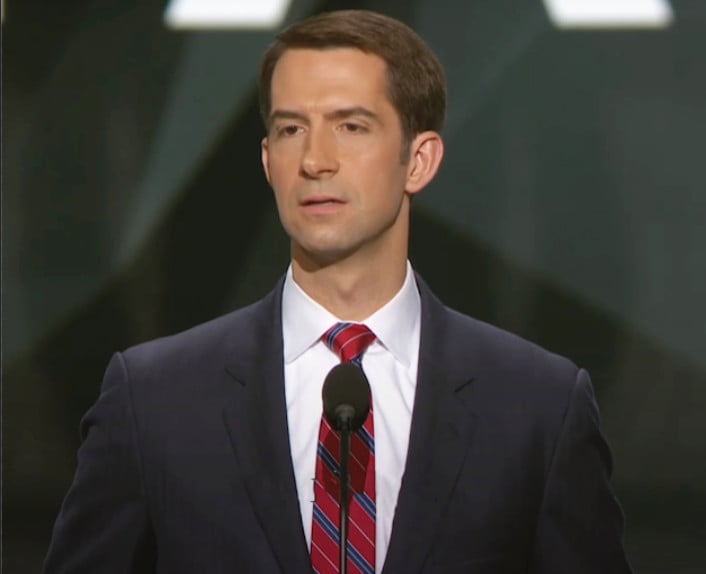
“President Donald Trump has delegated the full authority to Secretary Mark Esper to act in Asia-Pacific as well as the Indian Ocean.”, Regional political and security observer and analyst, does not want to be identified to speak.
Prof. Tho said: “The US government, the State Department and the Ministry of Defense, have expressed their strong and decisive anti-China attitude, expressing the policy viewpoint of ‘freedom maritime’ in the South China Sea and will pursue performance under any circumstances.”
“The consistency between the words and the actions of the US government will increase the confidence of the countries affected by the encroachment, threats of China and increase the reputation of the US government in the context of the United States and Europe. Europe is facing a lot of difficulties due to the double and heavy impacts on pandemic and economic recession. ”
China’s unruly violations of sovereignty in the context of the whole world struggling to deal with the Covid-19 outbreak originating from the country suggest that China is likely to continue to harass. East Sea.”
“I support the Vietnamese Ministry of Foreign Affairs’ handing over the objection note and requesting China’s compensation,” he said. In addition, Vietnam needs to push higher legal measures against China to the International Court of Justice, whose positive precedent is the Philippines.
However, the adjustment of foreign policy in general and relations with China in particular need to be put in a broader context, in which the East Sea is a regional security issue, a component of the ‘Chinese dream.’
So, how will Vietnam reposition? Assoc. Prof. Dr. Tho asked.
Let’s revisit where the “Chinese dream” came from and what is actually?
At the 12th National People’s Congress, in 2013, General Secretary Xi Jinping, elected President, spoke about the phrase “Chinese dream“
He said that “The great revival of the Chinese nation is China’s biggest dream” and that young people should “dare to dream, work diligently to fulfill their dreams and contribute to the national recovery.”
Party theorists generalize that the Chinese dream is the prosperity of China with its collective efforts, socialism and national glory.
The core characteristic of the Chinese dream is that the Communist Party controls the country, stemming from the process of economic rise and association with Xi Jinping’s personal power.
China with the policy of reform and opening up to attract foreign investment has grown rapidly during 30 years, the annual average GDP growth rate is over 10% and by 2010 catched up and then surpassed Japan.
The Chinese dream is described in two periods of 100 years.
Phase I celebrated the 100th anniversary of the founding of the Communist Party of China in 2020 with the goal of building a prosperous society.
Phase II celebrates the 100th anniversary of the establishment of the People’s Republic in 2049. This is an ambitious plan and is designed to ensure that people supporting the Communist Party maintain their leadership.
The Chinese dream was shaped by Xi Jinping’s tenure of power, seeing himself as the one who carried out the “heavenly mission“.
He took supreme power at the 18th National Congress in 2013 and in 2018 amended the Constitution, extending the term of the president, so that he could hold power for a lifetime.
His ‘One Belt One Road’ initiative, the idea of his ‘Silk Road’, tied to China’s ‘100 years of thinking’, without hiding China’s hegemonic ambition began with changing the map of the world, like drawing the boundary line ‘cow’s tongue line’ in the East Sea. ” Dr. Ngo continued to present.
Many Western commentators claim that the CPC created the Chinese dream based on the ‘hundred years of national wholesale‘, the hatred of colonial rule and the national sovereignty.
History records that during the Yuan Dynasty, a famous Italian man, Marco Polo (1254-1324), had wandered to China and served as a mandarin here for 20 years, after which he returned to the country by the Silk Road. His book, ‘Marco Polo’s Journey’, deals with product-laden shipments on the ‘Silk Road’, beginning the Western dream of China.
Since the 7th century, Guangzhou has been considered the start of the ‘Silk Road at Sea’. European imperial countries such as Portugal, England, France, and the Netherlands … in turn pulled to trade.
Trade developed until the 19th century, when the “Opium Wars” ‘ broke out with the British Empire.
China completely lost this war and the Manchu court was forced to sign unequal treaties, and opened many ports to foreign countries.
Hong Kong became the cession of the British Empire. Many other Western imperial states, following Britain’s footsteps, forced China to accept many unequal conditions right on sovereign land.
This humiliation of the Manchu court before the Western powers marked the 100-year history of ‘wholesales’ in the Chinese dream.
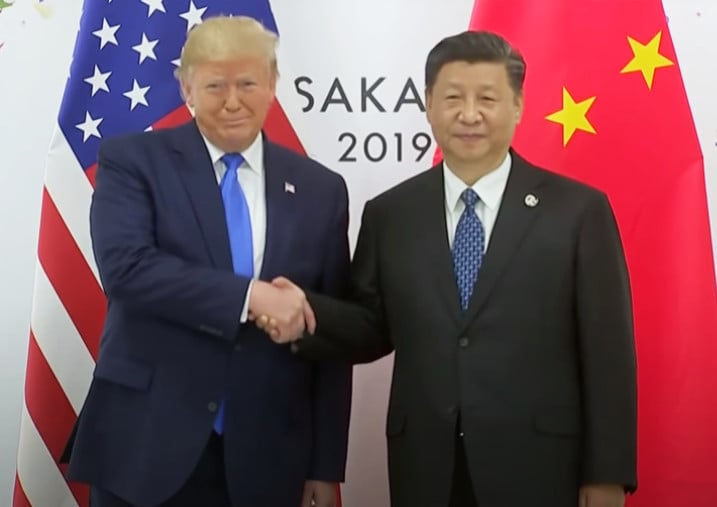
A national book based on hatred, a deep human instinct, may create revolutionary “revenge” measures of totalitarian and totalitarian regimes.
Despite being covered up by propaganda or demagogue, sometimes acts of tyranny and aggression are still unavoidable.
The Chinese have ‘hidden their time’ in building their own dreams and know how to make the Chinese dream move with concrete steps in the overall strategy.
From the history lesson and the existing economic power, a strategy is towards the Pacific Ocean, in which the East Sea is an area, identified as a component of the ‘Chinese dream’.
After the Cold War, greedy capitalists, which were characteristic, tried to find cheap labor, raw materials and commodity markets, constantly flattening the world. That is a basic content of globalization.
Capitalist countries benefit and China emerges. The global production chain is increasingly cohesive, expanding until many countries, first and foremost, are Asian and Oceania countries such as Japan, Korea, Malaysia, Australia … and Vietnam. China is the new economic “giant“, and realizes that it has become economically dependent on China.
When countries around the world realize it, it seems that all responses are passive. An American pivot to Asia, launched in the era of President B. Obama and reinforced by the bilateral relationship in President D. Trump’s ‘Make America Great Again’ policy, not clearly shaped to deal with the ‘Chinese dream‘.
Public opinion has become important in the era of social media and internet development, according to the researcher.
Along with “drawing the nine-dash line” that violates the sovereignty of countries in the East Sea and strengthening military potential, building artificial islands and militarizing them, China has started to use force to bully it neighboring countries in the region, including Vietnam.
Vietnam has an important geopolitical position for the ‘Chinese dream’. But efforts to ‘neutralize’ the policy of multilateralizing relations with foreign countries are lacking a clear and passive strategy in response to aggressive Chinese actions.
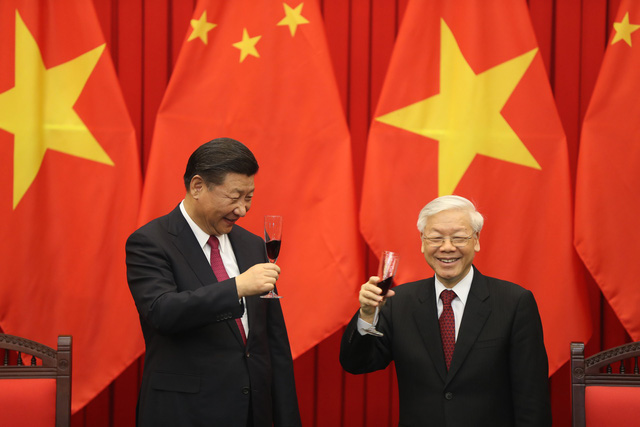
The main reason is due to two factors. First, the political regime with similar communist ideology, deep economic dependence. However, political institutional reform is a priority for both countries, such as the rule of law management of the country, currently controversial, as the tendency of consensus is that the party must obey the law.
Second, instability always exists with China’s risk of war, but waging war is not a commitment to a peaceful rise in the ‘Chinese dream’.
Moreover, China is also facing many internal challenges and prioritizing the ‘internal transformation’ issue.
From such a view on the ‘Chinese dream‘ hope for an autonomous foreign policy, peaceful struggle, but with more assertive choices in international relations on the East Sea, especially the strategy. The ‘Pacific – Indian Ocean‘ is formed and strengthened by the US initiative, a discussion topic at the party congress at all levels and in the 13th National Congress.
The dream of each nation in the development process is attached to the institution, and is increasingly being seen as an element of inclusive development. Institutional change can shape the national dream in historical periods and contexts.
Globalization has had the most bizarre effect. The Chinese dream is entering the next stage, they have chosen and are on their way. Will Vietnam build its own dream?” Dr. Ngo made a conclusion.
Thu Thuy from Hochiminh city – Thoibao.de (Translated)



